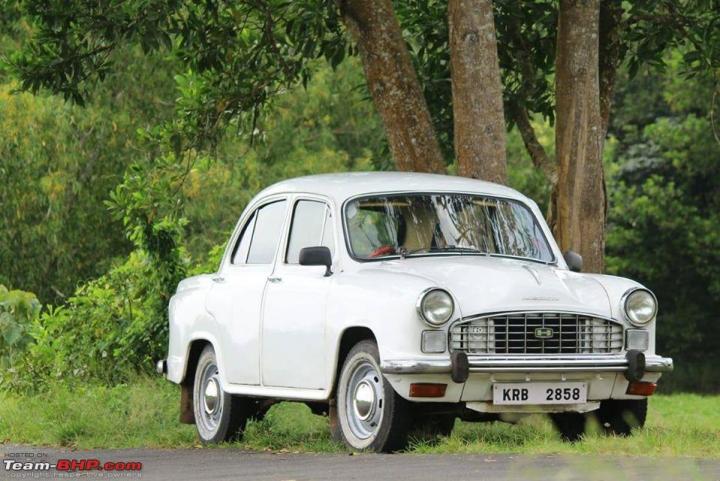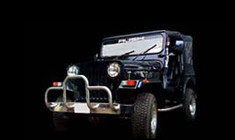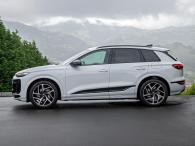News
Our Experience Road tripping with the Ambassador in the 70s
My parents were passionate about touring by road and I have been traveling to different parts of India since 1966, in the Landmaster/Ambassador, until 1988.
BHPian Iksvaku recently shared this with other enthusiasts.
I used to live in the tea gardens of Assam. My parents were passionate about touring by road and I have been travelling to different parts of India since 1966, in the Landmaster/Ambassador (different models, across the decades), until 1988. I have continued to do so, in more modern cars.
There is no doubt that modern cars have made life much easier. Once-a-year maintenance, minimal regular checks, higher-output and more efficient engines, much better brakes, the hop-in-and-go ability for long drives etc.
My comments below are in response to observations of other forum members and are based on highway and cross-country travel (all over India, Nepal and Bhutan) in the Ambassador.
- Our optimum (fuel consumption versus travel time) long-distance driving speed was 70kmph. The average speed would be 50kmph. We would drive from 06:00 hours to 15:00 hours (or less). We never had the problem with overheating.
- When we were posted in Darjeeling, we used to drive the Ambassador up an extremely steep incline (3rd gear + 4-wheel drive in our 1956 Land Rover), even with full load when we were returning from one of our tours. The only problem was holding the car on that incline, when faced with opposing traffic.
- Yes, we did carry a full set of tools, hoses, belts, fuses, spare oils, distilled water, a 20 litre jerrycan of fuel, towing rope, an extra spare tyre etc. I do not remember using anything other than spare tyres, on two punctures in 22 years!
- Since we changed to new models every three years, I do not remember rust being an issue.
- Servicing on a monthly basis was the norm, so it was not an inconvenience. Living in remote areas, our cars used to typically run 30,000 km per annum, being sold after they crossed 1,00,000 km.
- Yes, there were no safety measures, yet we never had any accident injuries due to the solid build.
- A single IRVM was the norm, so we never missed ORVMs.
- Smoke from the exhaust was not an issue if the car was maintained, except on cold starting.
- Fuel consumption was extremely variable, from car to car, due to the fact that every Ambassador car was unique. There really was no concept of uniform quality. The standard was 12kmpl. One car, which we had in the 1980s used to give us 17kmpl! Please note that our use was 100% open road driving.
- The bench seats were also of variable quality, from car to car, ranging from extremely soft to extremely hard. Yet, we were used to spending up to 9 hours a day in it without getting off as cripples!
- Starting was never an issue. Even when we were in Darjeeling, where the Land Rover was the regular car, it was my job to run the Ambassador engine every morning for 15 minutes. The process was to use the starting handle for 20 turns (I used to treat it as a part of my exercise regimen :-), then pump the accelerator and start the car.
- Only the first gear was not synchronised. We did not need to double clutch, though it was fun to do so!
- Swallowing petrol while clearing fuel line blocks is something I really do not miss!
- Manual steering was a workout only at low speeds. Since were in an open road environment, steering effort was not an issue.
- We never had a problem with reliability on our long drives. Small issues, such as fuel line blocks and distributor cleaning were all on local drives.
- Standard checks for oil, water and tyre pressure was done daily. Most of the maintenance would be done at home, weekly. After converting to modern cars, it took me a long time to stop opening the bonnet every day or checking tyre pressure weekly (once nitrogen was introduced).
- Painting the upper half of the headlamps black was only done at wartime.
- In the 1980s, we were posted in the hills and the virtually non-functional hand-brake of the Ambassador demanded the development of right-foot skill in lighting quick shifts from brake to accelerator.
- Changing tyres was a challenge! My mother used to time me and my record was 7 minutes.
- Central locking was not an issue as we never locked our car unless we went out of the state on a road trip. The moment we crossed our home state border “lock the car” became my father’s constant refrain at every stop.
- The high-beam/low-beam switch on the floor beside the clutch was actually quite convenient. In-between, the switch became a pull-push one on the centre panel (can we really call it a dashboard?) which was quite tricky to operate in high-speed (80kmph, in those days) night driving on the highway.
- Child locks existed! As far as I remember, all our cars had child locks on the rear doors.
- The requirement for a full-car check-up before a long tour is definitely not missed. Please note that (local) regular airport trips for us was of 220kms.
- Load capacity was at a different level. I have crammed up to 12 friends into it on a short trip within Kolkata. In one of our postings, Ambassador taxis used to run with both the left doors and the boot open. Five people in the front, six in the back, three people out of each left door and four people in the boot.
Checkout BHPian comments for more insights and information.





.jpg)











